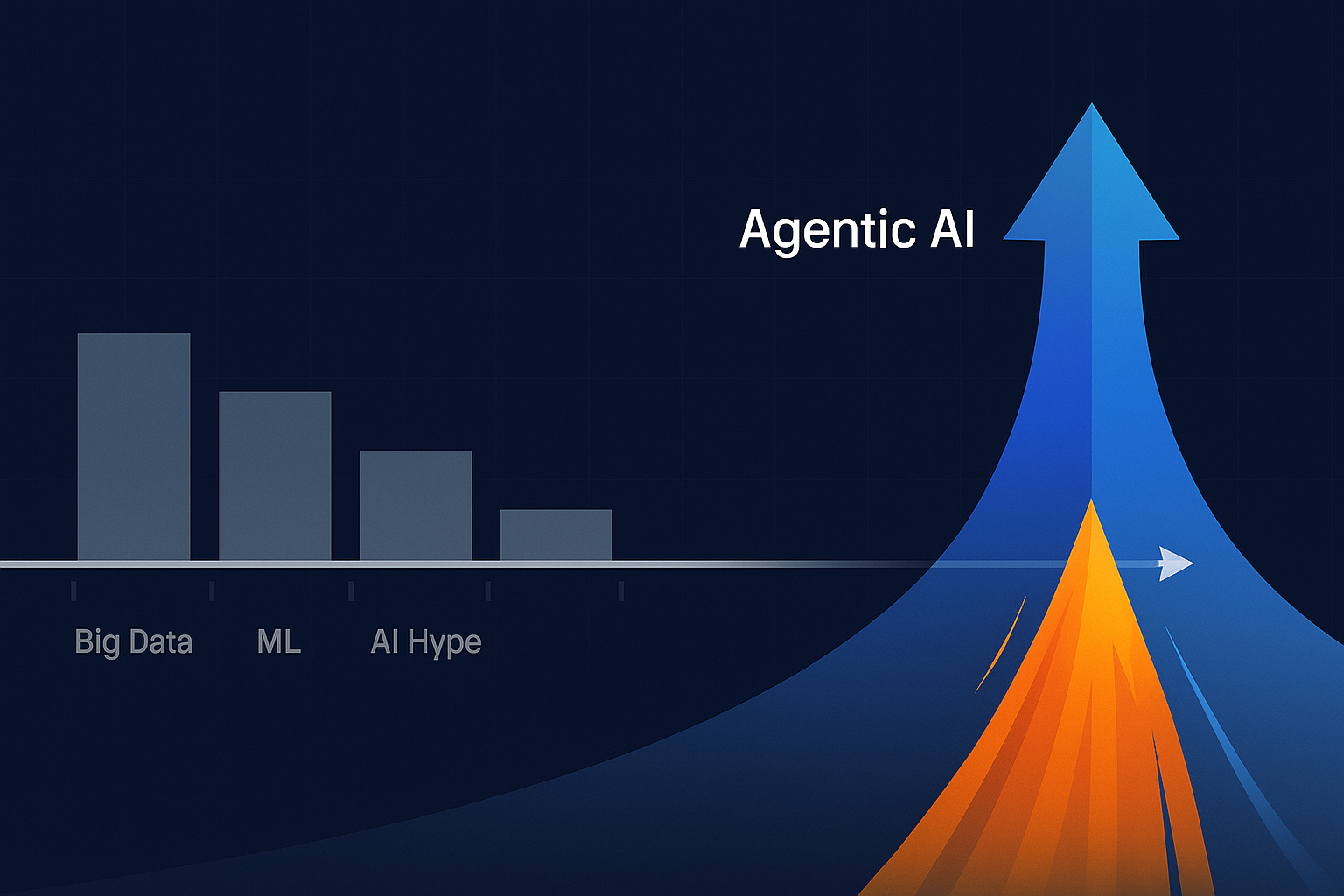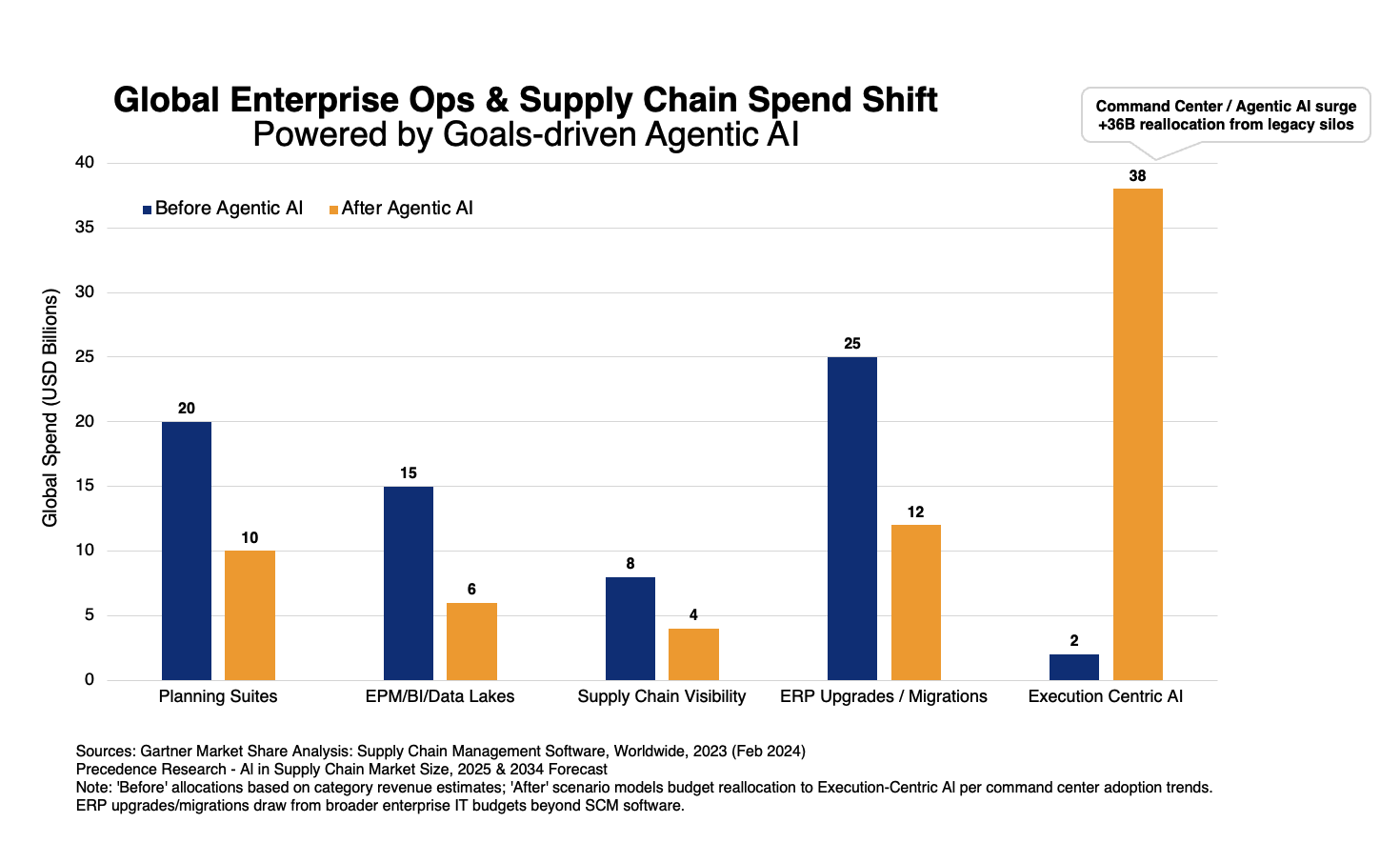Enterprise AI's Decades Where Nothing Happened – Remedying with Agentic AI
This is the first of a two-part set of articles on OpsVeda’s approach to Agentic AI.
“There are decades where nothing happens; and there are weeks where decades happen.” ― Vladimir Lenin
It’s been about a decade and half since terms like Big Data and AI/ML became prominent fixtures in boardroom conversations. A lot of money has been poured into these projects and even more has been said and written about the transformation that was around the corner. But has the reality lived up to the hype? A BCG study found that 74% of the companies they surveyed are “yet to show tangible value from their use of AI.” Such findings aren’t new. Various older studies had provided similar pointers. For example, a 2019 Gartner study had predicted that “only 15% of AI solutions deployed by 2022 will be successful, let alone create ROI positive value.”
All the grandiose talk about AI minting productivity, savings and revenue have been unmasked by these anaemic numbers. Looks like AI went through Lenin’s “decades where nothing happens.”
The studies identify several things that companies need to do differently – prioritizing human factors over technology/algorithms, focusing on core functions, attention to data quality and so on. But most AI practitioners will tell you that a lion’s share of AI projects that followed these common-sense measures also failed to deliver.
What explains this paradox? Perhaps it is because most past AI projects have been islands of automation. They addressed narrow decision points – demand forecast for a SKU, time before an equipment breaks down, ETA of a container and so on. These are just individual stages or datapoints in a workflow where many more decisions are made. So, even if the AI model performs well, it will only have a limited impact. And at the slightest hint of non-performance or difficulty in usage, it becomes convenient to switch back to old non-AI ways, and from there it is a spiral to desuetude.
A Goal-driven approach with Agentic AI
A planner’s job doesn’t end with generating forecasts. She uses the forecasts while working on one of her goals – ensuring sufficient inventory to service customer orders without ending up with excess inventory. Similarly, ETA of a container is not an end by itself. It is used it to achieve the goal (among others) of aligning input materials to production schedules.
With Agentic AI, the system can autonomously work towards goals as opposed to just automating select steps towards achieving the same. Apart from higher levels of automation, this enables the system to be proactive where it continuously senses changes in the operating environment and adjusts its actions to better align towards the goal. For example, when the agent senses that a container is going to be delayed, it automatically checks alternative shipments of the input material, alternate BOMs & routing, considers other production plans and reworks the best possible alternative. And it may even be set up to seek human approval in some situations - say if the newly worked out schedules necessitates changes to other production plans, or results in a cost escalation in this example.
The OpsVeda Edge
Over the years, OpsVeda built an Opportunity App repository that looked to optimize/maximize business outcomes across different dimensions and suggest cross-functional actions accordingly. However, users chose to optimize in departmental solution workbench(s) instead of leveraging cross-functional Opportunity Apps.
It turns out, decision oriented Opportunities that often lacked user ownership, can be mapped to Goals for Agentic AI. After all, orchestration of Business Goals via Agentic AI can serve as a unifier, overcoming departmental silos.
LRM reasoning – Shouldn’t there be guardrails?
One of the primary enablers of Agentic AI is the rapid progress of Large Reasoning Models (LRM) in the last few months. Now they can break-down complex problems, plan solutions, execute and even review (“reflect”) & redo their work using a different approach if needed.
As in the examples discussed, in the enterprise, problem solving often takes the shape of complex multi-stage workflows. LRMs may be able to reason and solve many of the operational problems like those discussed above. This will be especially true if the foundational model has been enhanced with domain specific material (using techniques like Retrieval-augmented generation (RAG) and fine-tuning).
But the prospect of an LRM designing and executing its own workflow can scare the bejesus out of most managers. It is well known that LRM reasoning is nowhere near perfect, and that they run into problems often with complex tasks. But the good news is that in enterprises chances are that the problem has already been solved before, and a well-established solution workflow albeit complex one already exists. So, it is more of a question of leveraging Agentic AI to match the situation to the known workflow goals and subsequently delegating the workflow execution to the Agent. Depending on the criticality of the task the delegation can be with or without human in the loop. This by itself can result in dramatic productivity boosts.
Are we saying that the planning & reasoning skills are not going to be leveraged? Not at all. There will be relatively simpler stages in workflows where LRM reasoning can be reliably exploited. Further in the few occasions where a situation cannot be matched to an existing goal and a new workflow must be created, Agentic AI can orchestrate the same and humans may approve/fine-tune. This orchestration may leverage existing agents to carry out certain stages in the newly created workflow. Of course, such newly created & approved Agentic workflows become part of the repository for future use.
The OpsVeda Edge
Thanks to its years of experience conceptualizing, improving and automating operational processes, OpsVeda is home to several workflows used by operations teams. This library includes relatively simple ones like clearing a delivery block to complex ones like evaluating options when a raw material is arriving late. So, OpsVeda’s Agents have an impressive portfolio of goals (opportunities) and the corresponding workflows with data to train on. For enterprises, OpsVeda’s Agentic AI capabilities is the quickest way to enable this technology, realize the efficiencies for their teams and get started on the journey towards autonomous operations.
Tools with Contextual Memory – The Lifeline
Operations & supply chains are complex. Many processes involve too many variables, too many variations, and too many stakeholders with conflicting incentives. Comparing alternatives generally require labyrinthine calculations and elaborate trade-off analysis.
In principle it is possible for an LLM to generate the code to carry out the calculations and execute the same to arrive at the above measures to aid decisions. But precision is almost always necessary in the trade-off analysis and the calculations are too important to be left to the whims & hallucinations of LLMs.
So, naturally these tasks must be handled by specialized systems and algorithms. This is where the ability of Agentic AI to contextually invoke external tools comes in. Each stage of the workflow can have access to an array of tools for specialized tasks and estimations. These tools could be interfaces (APIs) to functions in other systems, to programming tools where code snippets may be executed, specialized search engines, productivity tools like email or even other agents. Together with Agentic AI’s ability to handle long term memory (data across multiple interactions/sessions), this access to tools is critical for it to execute end-to-end tasks coherently.
The OpsVeda Edge
OpsVeda has been supporting customers handle a broad spectrum of operational opportunities & risks. This has resulted in it becoming one of the largest tool repositories that Agentic AI workflows can dip into. Fill-rates, allocations, service levels, penalties, lost sales, shipping decisions – name the operational measure or the task and the API will be there. This reduces the complexity involved in deploying Agentic AI workflows and allows teams to focus on portions of the flow that currently require human intervention – composing emails, taking decisions and so on.
Selecting processes for Agentic AI & making them competitive
So far, the discussion has mostly centered on leveraging Agentic AI to make workflows autonomous. Of course, the ROI from this technology is not going to be the same for all workflows. In the next part of this blog (“Ushering In AI’s Weeks Where Decades Happen”), we will discuss selecting processes that have a better shot at success.
Eventually the big beneficiaries will be companies that leverage Agentic AI to improve their workflows. We will also discuss how Reinforcement Learning with Agentic AI will help recalibrating workflows so that they get better at achieving their goals.
Stay tuned to our blogs as we continue to share milestones on this transformative journey. If you're interested in exploring how these features can help your enterprise become more responsive and autonomous, get in touch with us.
Let’s build the future of AI-powered Operations - together.






